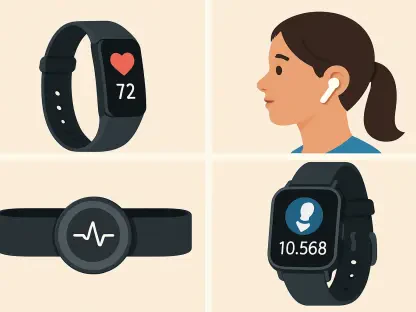The rapid advancement of artificial intelligence and robotics has led to the development of increasingly sophisticated home assistants. AI-powered devices like Apple’s ELEGNT research project are promising to revolutionize how we interact with technology by creating robots with expressive personalities. The potential of emotional robots to enhance our engagement and user experience is becoming more apparent, as they have the capacity to simulate emotions effectively. This article delves into how these emotional robots transform our interactions through their expressiveness, the challenges surrounding simulated emotions, their growing presence in the consumer market, and the hurdles they face in business environments.
The Importance of Expressiveness in Robots
One of the key themes in the development of emotional robots is the emphasis on expressiveness over humanoid forms. Researchers argue that a robot does not need to resemble a human to communicate effectively. Instead, the ability to exhibit expressive movements and simulate emotions can be sufficient to create the illusion of sentience. This approach is exemplified by Apple’s ELEGNT project, which focuses on developing a physically expressive and interactive user interface for non-humanoid robots.
The ELEGNT project features a lamp that uses various gestures and movements to simulate emotions and interactions. For instance, the lamp can nod or shake its “head,” lower its head to appear sad, wag its “tail” in excitement, and even push a cup towards the user as a reminder to stay hydrated. These actions are designed to make the lamp appear as though it has an internal state of mind and emotions, thereby enhancing user experience and engagement.
Studies have shown that expressive movements can significantly enhance interactions during social tasks. However, there is a delicate balance to be struck, as overly expressive robots might become distracting when specific functional actions are needed. This duality presents a design challenge in creating robots that are both helpful and engaging without overwhelming users with their “personality.”
The Debate Over Simulated Emotions
While the concept of emotional robots is intriguing, it also raises critical questions about the nature of simulated emotions. The researchers behind Apple’s ELEGNT project claim that their lamp has internal states that motivate its movements, including emotions. However, this claim has been met with skepticism, as there is a significant difference between programmed behavior that simulates emotion and actual emotional states.
If robots genuinely had emotions, it would revolutionize the field of computer science and raise profound philosophical and legal questions about sentience. However, Apple’s lamp merely mimics emotional behavior without genuinely experiencing emotions. This distinction is crucial, as it highlights the limitations of current technology in creating truly sentient robots. Despite this criticism, the usefulness and potential of expressive robots are undeniable. By simulating emotions, these robots can create a more engaging and emotionally resonant user experience. This capability is particularly valuable in the consumer market, where emotional connections can enhance user satisfaction and loyalty.
Emotional Robots in the Consumer Market
The consumer market for emotional robots is already seeing significant interest and growth. Several existing robots display personality through physical movements, including Jibo, Anki’s Cozmo, Sony Aibo, Kuri, Lovot, and Amazon Astro. Each of these robots utilizes different strategies to create an emotional connection with users, demonstrating the market potential for such devices. These robots are designed to be more than just functional tools; they aim to become companions that users can form emotional bonds with. For example, Sony’s Aibo robot dog can recognize its owner’s face, respond to touch, and exhibit behaviors that mimic those of a real dog. Similarly, Lovot is designed to evoke feelings of affection and care, with its soft, cuddly appearance and responsive movements.
The success of these robots suggests that there is a growing demand for AI-powered devices that offer more than just practical functionality. By incorporating expressive movements and simulated emotions, these robots can provide a more engaging and enjoyable user experience, potentially transforming the way we interact with technology in our homes.
Challenges in Business Applications
While emotional robots show great promise in the consumer market, their application in business environments appears more limited. Amazon’s attempt with Astro for Business was short-lived, and legal regulations like the European Union’s AI Act restrict the use of emotion-recognition systems in workplaces and educational settings. This points to a cultural and legal hesitancy to integrate emotionally expressive robots in professional scenarios. The reluctance to adopt emotional robots in business contexts may stem from concerns about privacy, ethical implications, and the potential for distraction. In professional settings, the primary focus is often on efficiency and productivity, and overly expressive robots might be seen as a hindrance rather than a help. Additionally, the use of emotion-recognition systems raises questions about data privacy and the ethical treatment of employees and customers.
Despite these challenges, there may still be niche applications for emotional robots in business environments. For example, robots with expressive personalities could be used in customer service roles, where creating a positive and engaging experience is crucial. However, widespread adoption in professional settings is likely to remain limited in the near future.
Apple’s Vision for the Future
The rapid progression in artificial intelligence and robotics has led to the creation of increasingly sophisticated home assistants. AI-driven devices, such as Apple’s ELEGNT research project, are on the brink of revolutionizing our interaction with technology by developing robots that have expressive personalities. The potential for emotional robots to elevate our engagement and user experience is becoming clearer, as these robots can convincingly simulate emotions. This article explores how emotional robots enhance our interactions through their expressiveness, tackles the challenges related to simulated emotions, discusses their growing presence in the consumer market, and examines the obstacles they encounter in business settings. As these robots become more integrated into our daily lives, they promise to transform not only personal experiences at home but also professional environments by providing a new level of interaction and engagement. Understanding these advancements is crucial, as they represent a significant shift in how humans and machines will coexist and communicate moving forward.









